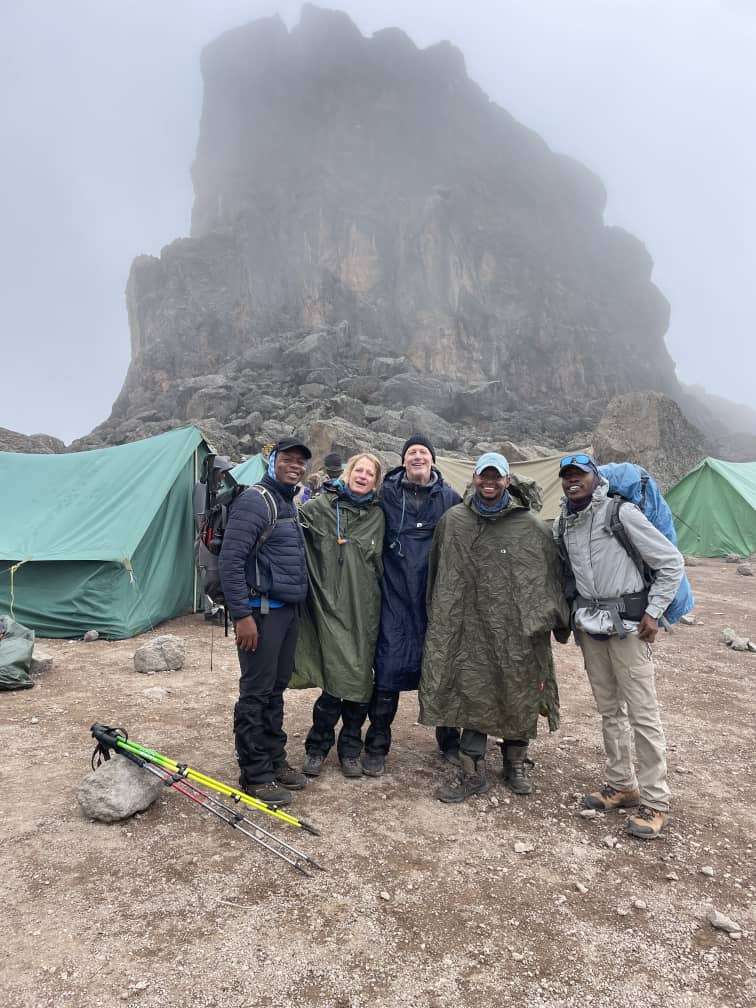Altitude Sickness
ACCLIMATIZATION AND ALTITUDE SICKNESS ON KILIMANJARO
Standing majestically at an astounding 5,895 meters (19,341 feet), Mount Kilimanjaro reigns as the pinnacle of Africa, an alluring ascent that beckons adventurers seeking the ultimate trekking challenge. However, concealed within this towering summit lies a unique set of hurdles, with altitude emerging as the most formidable adversary. At Golden Kits, we relentlessly prioritize your safety above all else, ensuring a journey that’s as thrilling as it is secure.

Understanding Altitude’s Impact on Kilimanjaro
Kilimanjaro’s allure lies not only in its sheer elevation but in its accessibility to hiking enthusiasts. Often referred to as a “walk-up” mountain due to the absence of technical climbing requirements, this ascent entices intrepid souls craving an extraordinary adventure. Yet, the potential for perilous situations resulting from altitude-related challenges is frequently underestimated.
As one ascends toward Kilimanjaro’s summit, it places itself within the realm of “extreme altitude,” a classification it shares with other formidable peaks such as Aconcagua and Denali (Mt. McKinley). In contrast, towering giants like Everest and K2 transcend into the realm of “ultra” altitude, rendering acclimatization an insurmountable feat.
Deciphering Altitude’s Impact
At the pinnacle of Kilimanjaro, oxygen levels plummet by approximately 49%, a stark contrast to sea-level conditions. However, this oxygen reduction is not a shift in percentage but a consequence of decreased barometric pressure, limiting the availability of oxygen in each breath.
This atmospheric shift engenders fluid accumulation around vital organs like the brain (High Altitude Cerebral Edema) and lungs (High Altitude Pulmonary Edema), culminating in severe medical conditions.
Navigating Altitude Sickness: An In-Depth Analysis
Mountain sickness manifests in three primary forms: Acute Mountain Sickness (AMS), High Altitude Cerebral Edema (HACE), and High Altitude Pulmonary Edema (HAPE). AMS ranges from mild to severe, with moderate cases demanding immediate descent to lower elevations for alleviation.
Mild AMS symptoms often mirror a hangover, while its moderate manifestation encompasses intensified headaches, dizziness, and respiratory distress. Severe AMS poses life-threatening risks, mandating urgent evacuation from the mountain.
Confronting Potential Complications
HAPE arises from elevated lung artery pressure, leading to fluid accumulation around the lungs. Symptoms include coughing, breathing difficulties, and disorientation. Immediate oxygen administration and evacuation become crucial interventions.
HACE, equally perilous, results in brain fluid buildup, inducing confusion, lack of coordination, and intense headaches. Swift evacuation to a medical facility becomes an imperative necessity.
Diagnosing Altitude Sickness
Our guides conduct daily health checks using a pulse oximeter, combining oxygen saturation data with presenting symptoms to assess your condition. Employing the Lake Louise Scoring System aids in gauging symptom severity, guiding our approach in addressing your medical state.
Acclimatization: Shielding Against Altitude Sickness
Your body initiates adaptive changes to cope with the low-oxygen, low-pressure environment. Ascending slowly, allowing your body time to adjust, and incorporating acclimatization days are pivotal strategies for minimizing altitude sickness risks.
Preventative Measures and Health Considerations
Opting for longer routes, maintaining a steady pace, staying adequately hydrated, and consulting your physician about medications like Diamox can aid in mitigating altitude sickness. Avoiding overexertion, maintaining proper nutrition, and wearing protective gear against hypothermia and sun exposure are crucial precautions.
Golden Kit Tour and Safari’s Safety Measures
We unwaveringly prioritize your safety, with trained guides diligently monitoring your well-being. Our team carries emergency oxygen, portable stretchers, and collaborates with Kilimanjaro helicopter rescue for prompt evacuations if needed.
As you prepare to embark on this awe-inspiring journey, heed the warnings of altitude, respect the mountain’s supremacy, and place your trust in our team to navigate you through the trials and triumphs of Kilimanjaro’s altitude adventure.
Leave the worries associated with altitude sickness with us, and we will prepare you for success.

